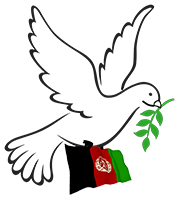The Taliban have arrested an elderly British couple in Bamyan province, who were responsible for several educational projects aimed at children and mothers. The couple had been working in Afghanistan for many years.
The couple had initiated five educational projects in Kabul and another in Bamyan. These projects were designed to support local children and mothers, focusing on education and community development.
Sara Entwistle, the daughter of the couple, spoke to a British media outlet and explained that her parents had been active in educational work in Afghanistan for the past 18 years. They were passionate about helping the country they loved.
Sara emphasized that her parents’ sole intention was to assist the people of Afghanistan, stating, “They only tried to help a country they cared deeply about.” Their dedication to education was central to their mission in Afghanistan.
So far, the Taliban have not made any official statements regarding the arrest of the couple. This raises concerns, as the Taliban had previously detained foreign citizens in connection with humanitarian aid efforts in Afghanistan.
The arrest of this British couple reflects the ongoing uncertainty and challenges for foreign nationals in Afghanistan, particularly those involved in humanitarian and educational work. The situation remains tense, and the international community is closely monitoring the developments.
 Afghanistan Peace Campaign
Afghanistan Peace Campaign

